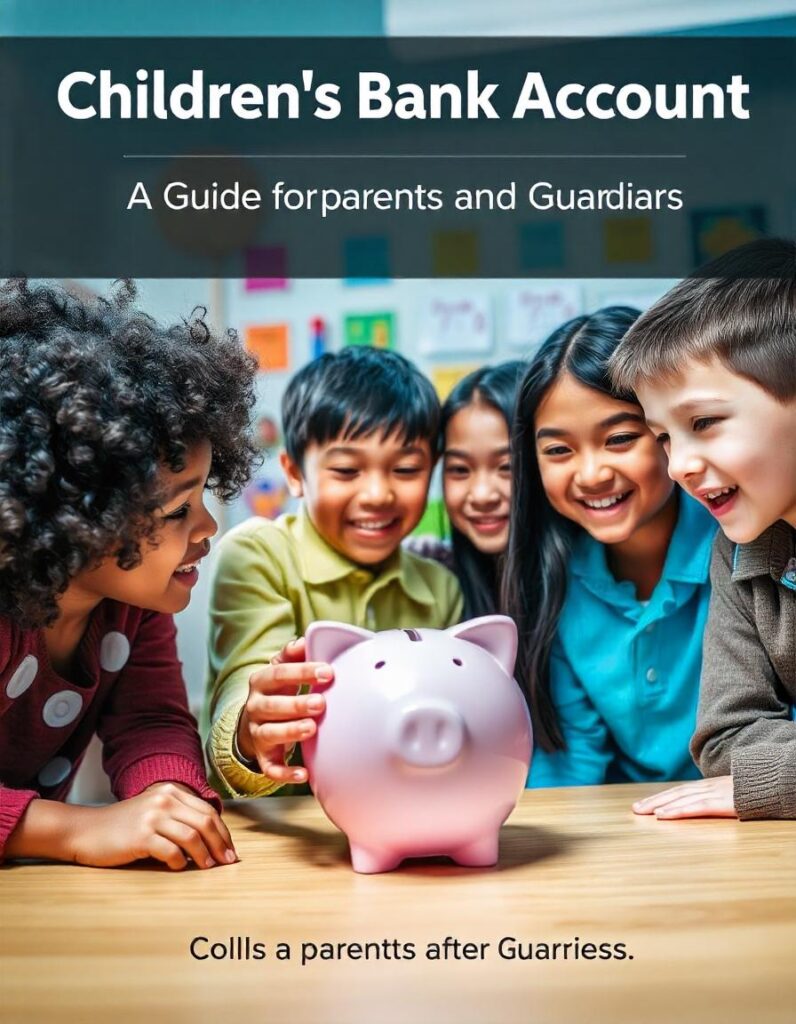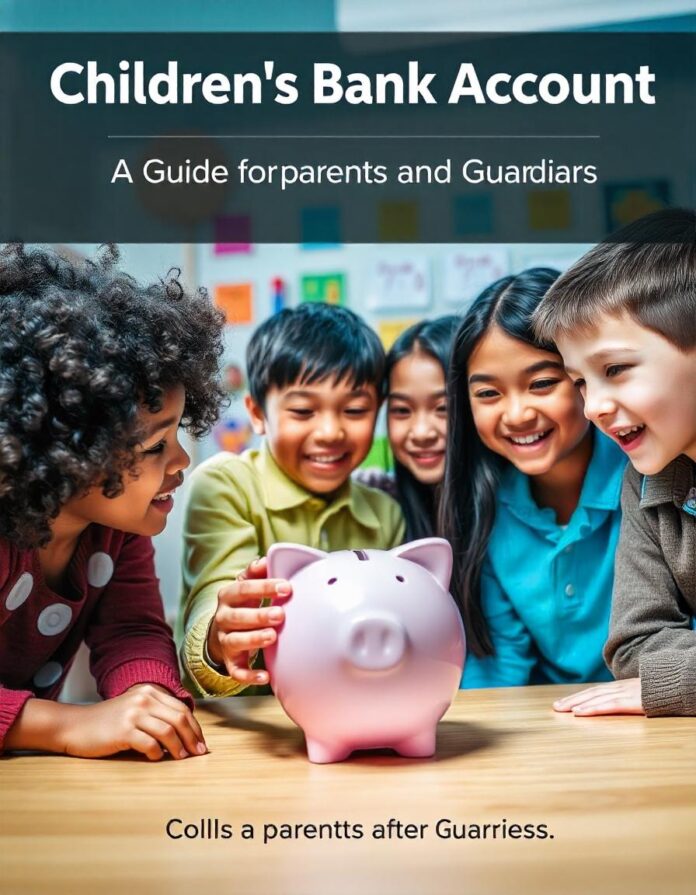There is need to to open and start running your children’s bank account. Are you a parent or guardian looking for a safe and secure way to teach your child about money management? Look no further than children’s bank accounts! In this comprehensive guide, we will explore the world of children’s bank accounts, providing you with valuable insights, practical examples, and expert advice to help you make informed decisions for your child’s financial future.
Why Children’s Bank Accounts Matter
Introducing your child to the concept of money management at an early age can have a profound impact on their financial habits later in life. Children’s bank accounts offer a structured and controlled environment where your child can learn about saving, spending, and the importance of financial responsibility.
By opening a children’s bank account, you provide your child with a hands-on experience in handling money, making deposits, and tracking their savings. This practical knowledge will empower them to make informed financial decisions as they grow older.
The Benefits of Children’s Bank Accounts
1. Financial Education: Children’s bank accounts serve as an excellent tool for teaching your child about money management. They can learn the value of saving, budgeting, and setting financial goals.
2. Safe and Secure: Children’s bank accounts are typically protected by robust security measures, ensuring that your child’s money is safe. Additionally, these accounts often come with parental controls, allowing you to monitor and guide your child’s financial activities.
3. Interest Earnings: Some children’s bank accounts offer interest on savings, allowing your child to see their money grow over time. This can be a great motivator for saving and instilling a sense of responsibility.
4. Financial Independence: Opening a children’s bank account encourages your child to take ownership of their finances. They can learn to manage their money independently and develop essential skills for adulthood. Please read more about everything you need to know about children’s acccount
Choosing the Right Children’s Bank Account

When it comes to selecting a children’s bank account, there are several factors to consider. Here are some key points to keep in mind:
1. Age Restrictions and Account Types
Different banks and financial institutions may have varying age restrictions and account types for children. Some may offer accounts specifically tailored to different age groups, such as preschoolers, tweens, or teenagers. Consider the age of your child and choose an account that aligns with their needs and abilities.
2. Fees and Charges
Be aware of any fees or charges associated with children’s bank accounts. While some accounts may be fee-free, others may have certain transaction fees or minimum balance requirements. Carefully review the terms and conditions to ensure you choose an account that suits your financial situation.
3. Online and Mobile Banking Features
In today’s digital age, it’s important to consider the online and mobile banking features offered by the bank. Look for user-friendly interfaces, mobile apps, and features that allow both you and your child to easily manage the account and track their finances.
4. Financial Education Resources
Some banks provide additional resources to support your child’s financial education journey. These may include interactive games, educational materials, or online tutorials. Consider the availability of these resources when choosing a children’s bank account.
5. Parental Controls and Monitoring
As a parent or guardian, you may want to have control over your child’s account and monitor their financial activities. Look for accounts that offer parental controls, allowing you to set spending limits, receive notifications, or track transactions.
Real-Life Applications: Examples and Case Studies
Let’s dive into some real-life scenarios to understand how children’s bank accounts can be applied and the benefits they offer.
1. Setting Savings Goals
Imagine your child has their eye on a new bike or a special toy. By opening a children’s bank account, you can help them set a savings goal. Encourage them to deposit a portion of their allowance or any money they receive as gifts into their account. Over time, they will see their savings grow, and they will learn the value of patience and delayed gratification.
2. Teaching Budgeting Skills
As your child grows older, they may start receiving a regular allowance or even have a part-time job. Help them create a budget by allocating money for different purposes such as saving, spending, and giving. With a children’s bank account, they can easily track their expenses and learn to make responsible financial decisions.
3. Learning about Interest
Introduce your child to the concept of interest by explaining how their savings can earn money over time. Show them how the bank adds interest to their account balance periodically. This can spark their interest in saving more and help them understand the benefits of long-term financial planning.
Engage and Interact with Your Child
To make the most of your child’s bank account experience, consider incorporating engaging elements that foster interaction and learning. Here are a few ideas:
1. Thought-Provoking Questions: Ask your child questions like, “What are your financial goals?” or “How do you decide what to spend your money on?” These questions encourage critical thinking and help your child reflect on their financial choices.
2. Action-Inviting CTAs: Encourage your child to take action by setting savings goals or making a plan for their money. For example, you could say, “Let’s create a budget together and see how much you can save each month!”
3. Brief Quizzes: Test your child’s financial knowledge with fun quizzes. For instance, you could ask, “What is the difference between saving and spending?” or “Why is it important to keep track of your expenses?”
Stories, Quotes, and Statistics
To make your journey through the world of children’s bank accounts even more exciting, let’s explore some captivating stories, insightful quotes, and relevant statistics.
Story: Emma’s Money Adventure
Emma, a 10-year-old girl, opened her first children’s bank account with her parents’ guidance. She started saving a portion of her weekly allowance and birthday money. With the help of her bank’s financial education resources, she learned about goal setting and budgeting. Emma saved diligently for a year and was thrilled when she finally had enough to buy her dream bicycle. This experience taught her the value of patience, saving, and achieving her goals through financial planning.
Statistics:
– According to a survey conducted by the American Bankers Association, 72% of parents believe it is important for their child to have a bank account.
– The same survey found that 64% of parents believe children’s bank accounts help teach financial responsibility.
– A study by the University of Cambridge revealed that children who have their own bank accounts are more likely to develop good financial habits as adults.
Conclusion
Children’s bank accounts offer a valuable opportunity for parents and guardians to teach their children about money management, savings, and financial responsibility. By choosing the right account, engaging your child, and providing real-life examples, you can set them on a path towards a secure financial future. Remember, it’s never too early to start building a strong foundation for your child’s financial well-being. So why wait? Open a children’s bank account today and embark on a rewarding journey of financial education together!
Read Through Other Related Articles
How to Open Bank Account In Online: Securing Your Finances
What Is Bank Signature: An Ultimate Guide for New Bank Account
The Chase Bank: Your Comprehensive Guide to Banking Services
Chase Banking Account Fees: Everything You Need to Know
Bank of America Account Statement: An Ultimate Guide to Using It


